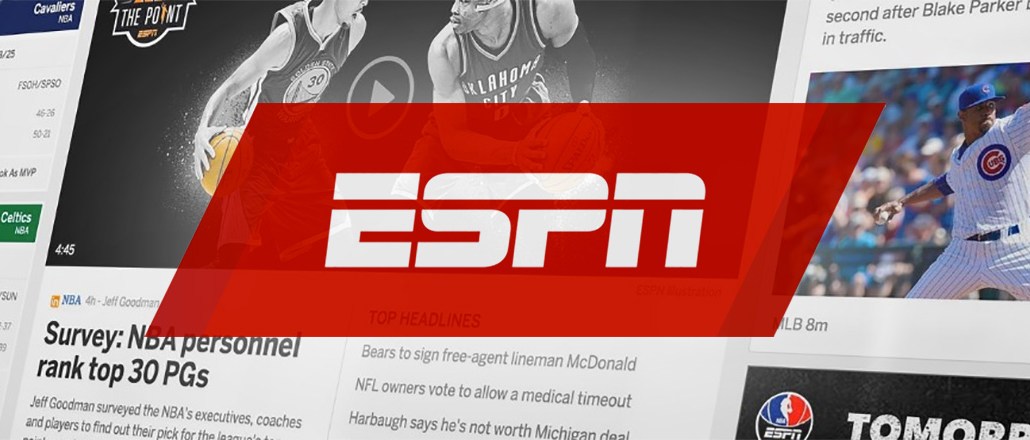Save 50% on a 3-month Digiday+ membership. Ends Dec 5.

While most publishers are catering to sidedoor traffic, ESPN is putting its new homepage front and center.
A lot has changed since ESPN.com’s last redesign in 2009. Not only have mobile and social overtaken the desktop homepage as the primary ways people interact with publishers’ output, but the sports vertical has been filled to the brim with new social-savvy sports sites. The new ESPN, launched last night, is an effort to get in front of these shifts.
“All the consumption trends point to people finding information in all sorts of new and different ways. We’ve always been a destination online and on television, and obviously we don’t want to give that up,” said John Kosner, ESPN evp of digital and print.
Much of the new ESPN.com is designed around that idea of making the site a destination — and to keep people sticking around. ESPN Now, for example, is a Twitter-like curated stream of real-time conversations — including breaking news, in-game highlights, and images. Kosner said that ESPN realized that while it was creating content that people were talking about, it didn’t own the real-time discussion around it. Similar thinking was put into other features on the site, including its scoreboard and focus on personalization, both of which are aimed at attracting readers directly and increasing their relevance.
The approach makes particular sense for ESPN, which still gets 75 percent of its traffic from direct visitors. That’s a very different referral picture compared to most publishers, which are losing direct visitors to those coming in through social channels. Despite that, ESPN still has a sizable social footprint on social platforms, including Snapchat.
The new site is also heavily focused on creating a consistent look, feel and experience on ESPN across screen sizes. Around 50 percent of ESPN’s traffic is mobile, a reality that has forced the site to design for small screens before it does so for large ones. And then there’s video, ESPN’s bread and butter, which the new site is designed to better surface.
“ESPN goes where sports fans go, and their business model follows successfully,” said Jason Kint, CEO of Digital Content Next. “When you’re the worldwide leader, this consumer-centricity is necessary to continued success.”
But commanding the uncontested attention of sports fans isn’t an easy task in the age of Twitter and Facebook, which dominate news consumption. Likewise, ESPN.com now faces digital competition from the likes of Bleacher Report, Vox Media’s SBNation and USA Today’s FTW, which have optimized themselves around today’s consumption habits.
Despite its new competition, ESPN.com isn’t exactly struggling. It’s still by far the largest sports site in the U.S., with 74.6 million unique visitors, according to comScore, a 32 percent increase over last year. That growth outpaces its nearest competitors Yahoo, Bleacher Report and Fox Sports, which got 59.5 million, 50.3 million and 48.6 million visitors in February, respectively.
“A lot of the sports stuff that gets shared on the Web is the type of stuff that ESPN is not going to do,” said Kosner, explaining how the site plans to stay differentiated in the face of competition. “But fans now have the expectation that they can get the information they want when they want it on the device they have. You have to create an experience that responds to that.”
More in Media

European publishers say the Digital Omnibus ‘cookie fix’ leaves them worse off
The European Union’s attempt at a legislative spring clean for Europe’s web of data privacy rules, has landed flat with publishers.

Digiday+ Research Subscription Index 2025: Subscription strategies from Bloomberg, The New York Times, Vox and others
Digiday’s third annual Subscription Index examines and measures publishers’ subscription strategies to identify common approaches and key tactics among Bloomberg, The New York Times, Vox and others.

From lawsuits to lobbying: How publishers are fighting AI
We may be closing out 2025, but publishers aren’t retreating from the battle of AI search — some are escalating it, and they expect the fight to stretch deep into 2026.






